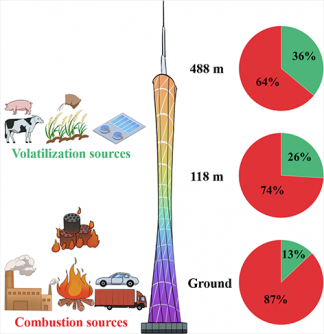URGENT UPDATE: A groundbreaking study from Jinan University has revealed that combustion-related activities are the primary source of atmospheric ammonia in the Pearl River Delta (PRD), China. This research, just published in Frontiers of Environmental Science & Engineering, highlights critical environmental concerns in a region known for its high levels of air pollution.
This study, conducted at the iconic Canton Tower, the tallest structure in the PRD, focused on understanding ammonia (NH3) emissions across three atmospheric heights: ground level, 118 m, and 488 m. Researchers collected data on fine particulate matter (PM 2.5), essential for assessing air quality impacts on public health.
The findings revealed average NH4+ concentrations of 2.7 ± 1.4, 3.0 ± 1.8, and 2.6 ± 1.7 μg/m3 at each height, showing no significant differences. However, a notable correlation in the stable nitrogen isotope composition values indicated that ammonia emissions vary significantly with altitude.
Using advanced techniques such as the Bayesian Isotope Mixture Model, the researchers identified the sources of NH3 emissions. The results are alarming: at ground level, agriculture contributed 9.9% ± 4.4%, waste processes accounted for 8.3% ± 5.5%, and vehicle emissions were responsible for a staggering 29% ± 8.0%. Biomass burning, NH3 slip, and coal combustion also played significant roles, contributing 16% ± 2.2%, 25% ± 6.0%, and 12% ± 3.4%, respectively.
At an altitude of 488 m, the influence of local activities diminished, stabilizing the contributions from these sources. This indicates that while ground-level emissions fluctuate based on human activities, higher altitudes experience less variability.
The implications of this study are profound, underscoring the urgent need for targeted air quality management strategies in the PRD region, which is home to millions of residents. Ammonia is not just a local issue; it has far-reaching effects on regional air quality and public health, particularly concerning the formation of harmful PM 2.5 particles.
As cities worldwide grapple with air pollution, this study serves as a crucial reminder of the challenges faced in urban environments. The findings emphasize the importance of understanding emission sources to develop effective policies aimed at reducing air pollution and protecting public health.
For those interested in the detailed findings, the full paper is accessible at: Frontiers of Environmental Science & Engineering.
Stay tuned for more updates on air quality research and its implications for global health.







